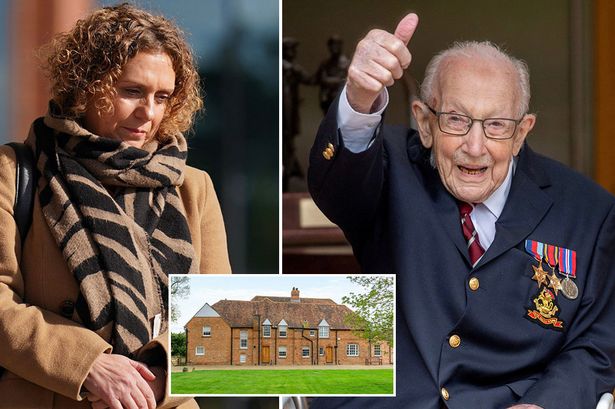The picturesque Bedfordshire village of Marston Moretaine became a focal point of national pride and admiration during the early days of the COVID-19 pandemic. It was here, in the garden of their family home, that Captain Sir Tom Moore, a centenarian war veteran, embarked on his inspirational fundraising walk, capturing the hearts of a nation grappling with uncertainty and fear. His simple act of walking 100 laps of his garden before his 100th birthday, initially aiming to raise a modest £1,000 for NHS Charities Together, snowballed into a phenomenal fundraising campaign, ultimately amassing close to £40 million. The family home, a comfortable country mansion, became a backdrop to this extraordinary story, its garden a symbol of resilience, hope, and the indomitable human spirit. Now, reports suggest that Hannah Ingram-Moore and her husband Colin, Captain Tom’s daughter and son-in-law, have taken the property off the market.
The decision to remove the property from the market follows a period of intense scrutiny surrounding planning applications and allegations of breaches related to the construction of a now-demolished building on the grounds. The initial planning application for the building, named the Captain Tom Foundation Building, was submitted by the Ingram-Moores and approved by Central Bedfordshire Council. However, subsequent retrospective planning applications were refused due to concerns about the size and nature of the structure, which reportedly deviated significantly from the approved plans. This refusal triggered an enforcement notice from the council, requiring the demolition of the unauthorized construction. The unfolding situation became a source of public debate and controversy, casting a shadow over the inspiring legacy of Captain Tom’s fundraising efforts.
The specifics of the planning dispute revolve around the evolution of the initially approved plan for a modest office building into what ultimately became a substantially larger structure housing a spa pool, which the council deemed incompatible with the original application and detrimental to the green belt. The Ingram-Moores contested the council’s decision, arguing that the building was intended to support the work of the Captain Tom Foundation and provide suitable facilities for its operations. However, the council maintained its position, asserting that the scale and nature of the constructed building were a clear breach of planning regulations. This impasse ultimately led to the demolition of the building, adding another layer of complexity to the narrative surrounding the Marston Moretaine property.
The saga surrounding the planning applications and subsequent demolition has undoubtedly contributed to the decision to withdraw the property from the market. The publicity surrounding the dispute likely made a sale more challenging, potentially impacting the property’s market value and attracting unwanted attention. Furthermore, the emotional toll of the ongoing situation on the family may have played a significant role in the decision. The property, once a place of joy and celebration, had become entangled in a complex and contentious public debate, making it understandable that the family might choose to withdraw from the public spotlight and reconsider their options.
The future of the Marston Moretaine property remains uncertain. While currently off the market, it is possible that the Ingram-Moores may revisit the decision to sell at a later date, perhaps after the dust has settled on the planning controversy and the associated media attention has subsided. They may also choose to retain the property, preserving it as a family home and a tangible connection to Captain Tom’s remarkable legacy. Regardless of their ultimate decision, the property will undoubtedly continue to hold significant emotional value for the family, serving as a constant reminder of the extraordinary events that unfolded within its garden.
The story of the Marston Moretaine property is a complex narrative, encompassing both heartwarming inspiration and subsequent controversy. It serves as a reminder of the complexities that can arise when private lives intersect with public scrutiny, particularly in the age of social media and 24-hour news cycles. While the focus initially centered on the incredible fundraising achievement of Captain Tom, the subsequent planning dispute shifted the narrative, prompting reflection on the challenges of balancing personal interests with regulatory requirements and the potential pitfalls of navigating public perception. As the Ingram-Moore family navigate this challenging period, the Marston Moretaine property remains a significant symbol, both of Captain Tom’s enduring legacy and the intricate complexities of family and public life.














